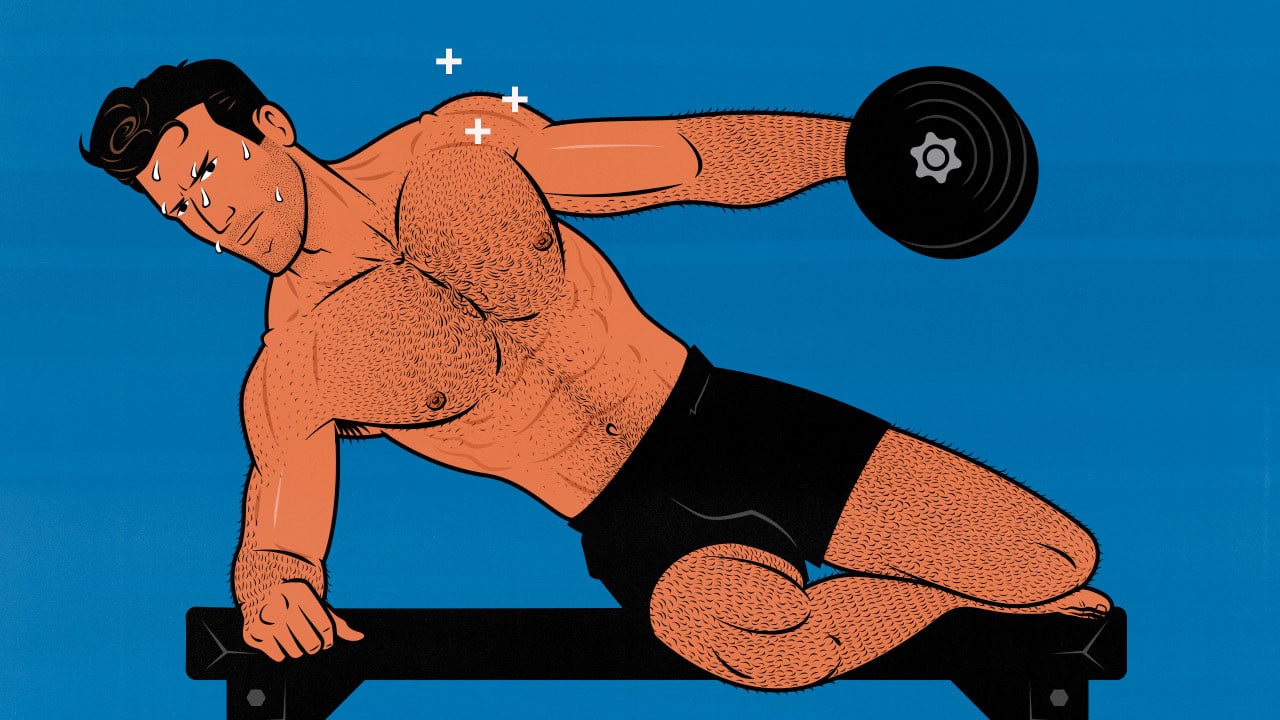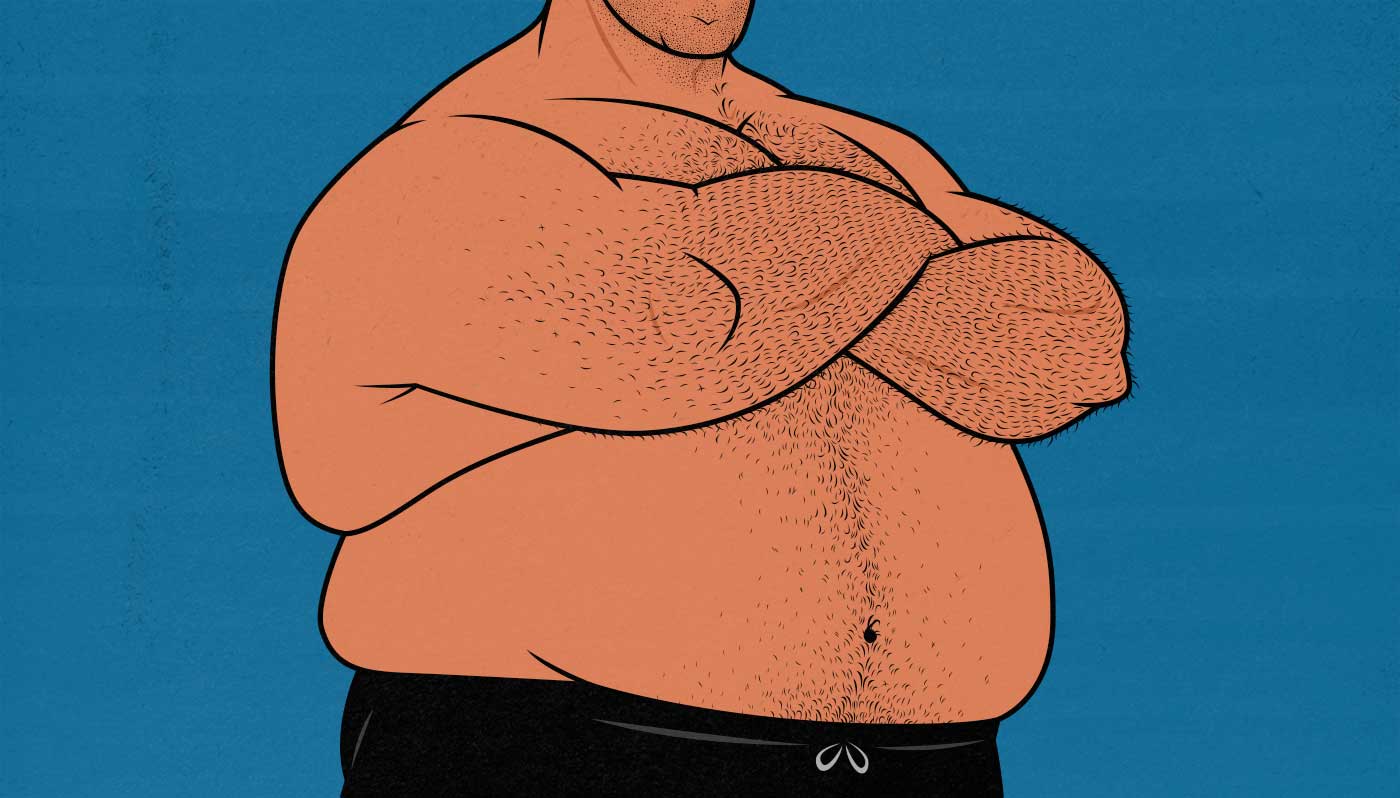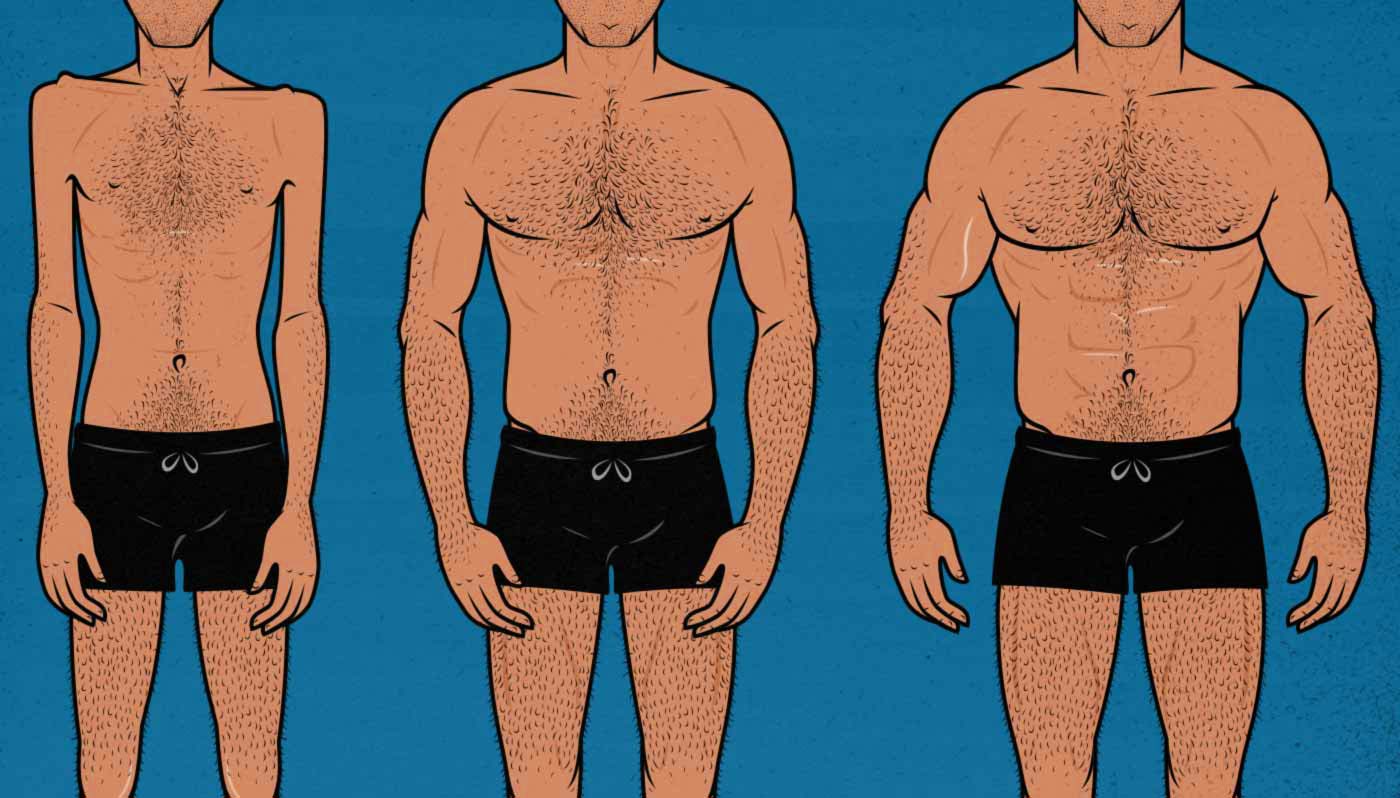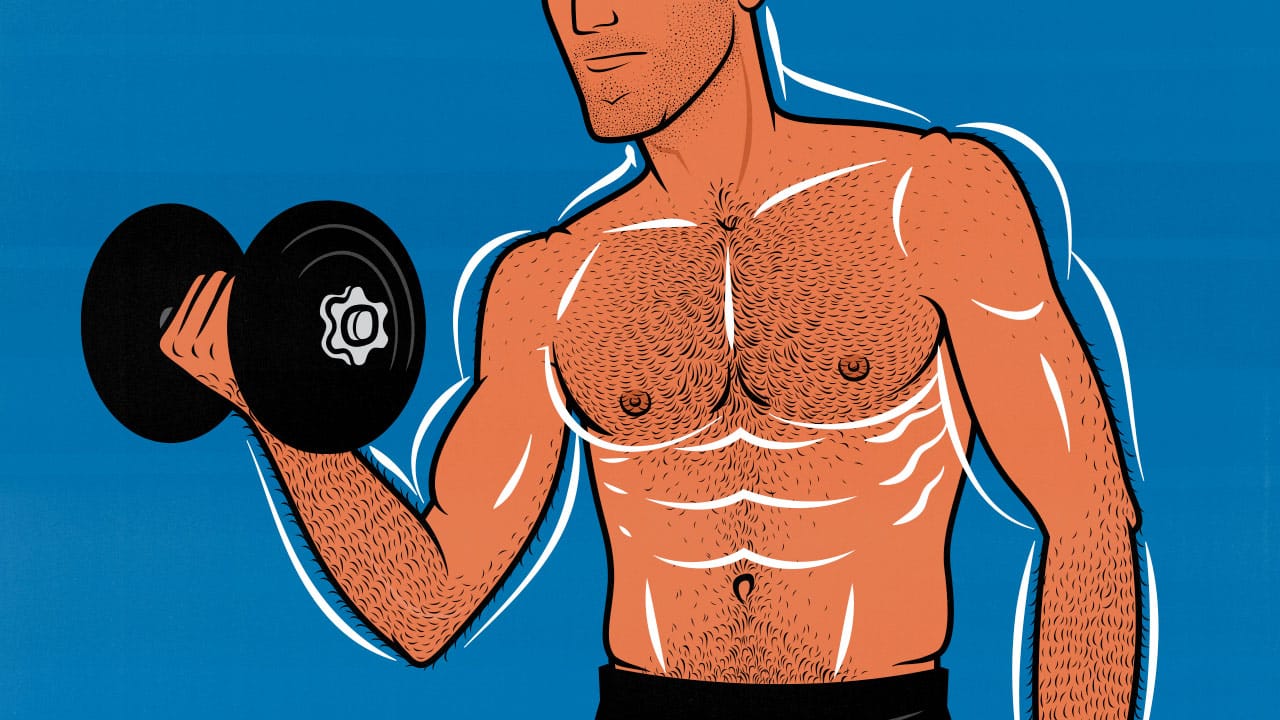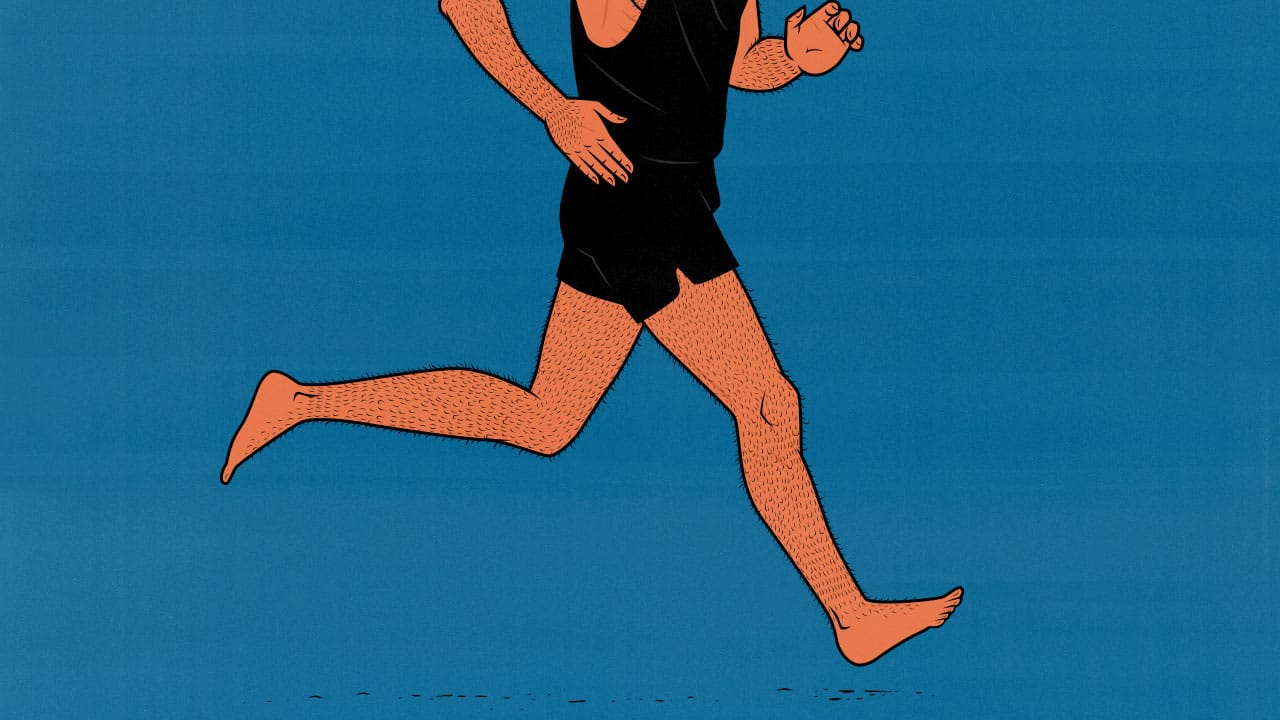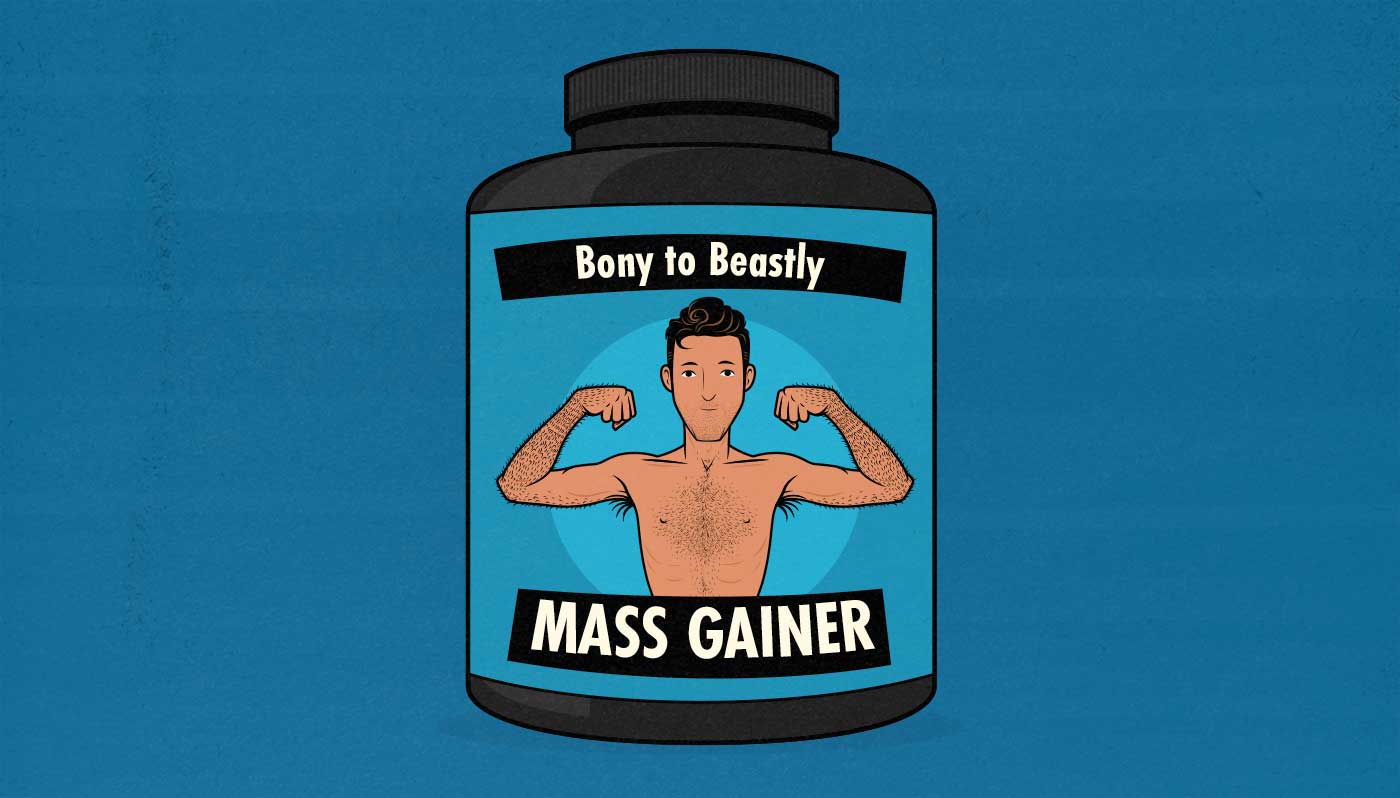Posts by Shane Duquette
The Best Bulking Programs for Skinny Beginners in 2024 (Reviewed)
In this article, we’re reviewing the five best bulking programs for skinny beginners. To get this list, we started by surveying our readers, the vast majority of whom have successfully bulked up. They’re naturally skinny, they’ve tried different bulking programs, and they know firsthand what worked for them. From there, Marco and I critically reviewed the top five programs, taking everyone’s experiences and success rates into account.
We’re also bulking experts ourselves. Marco is naturally skinny, he has a degree in health sciences, he has over a decade of experience as a full-time strength coach, and he’s helped a wide variety of clients bulk up, ranging from everyday skinny guys all the way up to college, professional, and Olympic athletes.
I’m naturally skinny, too, with over a decade of full-time experience helping over 15,000 skinny people bulk up. We live and breathe this niche. Nobody knows more about this than us.
Note: we aren’t reviewing our own bulking program. We’re much too biased.
Note: there are no affiliate links.
Read MoreThe Best Side Delt Exercises Are Weird Lateral Raises
The overhead press is the best overall shoulder exercise. If you want a minimalist workout routine, that’s all you need. If you really want to build bigger side delts, though, it pays to include an exercise that trains them directly.
Lateral raises are the best exercise for your side delts, and they can take you quite far, but you can do even better. Lateral raises are easy to improve upon. Here’s how.
Read MoreShould You Lift More Weight or Do More Reps to Build Muscle?
The top search result for this question is wrong, and it’s bugging me. There’s this old myth that heavier weights are better for building muscle while lighter weights are better for gaining endurance. That’s not quite right.
Both low-rep and high-rep sets can be equally good for building muscle. Anywhere from 4–40 reps per set stimulates a similar amount of muscle growth. Doing 6–20 reps tends to be a little easier and more efficient. Most bodybuilders lift right in the middle, favouring 8–12 reps.
However, different rep ranges provoke slightly different adaptations. The best way to build muscle is to take advantage of both. A balanced muscle-building program will use a mix of heavier weights and higher reps. More on that in a moment.
This begs another question: when you progressively overload your exercises, should you focus on adding more weight or adding more reps? Both can be equally good for building muscle. It all depends on what exercise you’re doing and what you’re trying to accomplish.
Read MoreHow Much Fat Will You Gain While Bulking?
One of the most common bulking mistakes is to be so scared of gaining fat that you fail to gain weight. If you’re 130 pounds, the only way to get up to 180 pounds is to gain weight. There’s no other path there. You have to bulk.
But bulking is a dastardly process. You can just as easily mess it up by gaining too much weight, causing needless fat gain. You can burn that fat off, but it can still be a frustrating setback.
To make things even trickier, many factors affect the ratio of muscle and fat you gain, including your workout program, your bulking diet, your genetics, and even your sleep habits. It’s possible to bulk at a reasonable pace and still gain extra fat.
If you notice fat gain, does that mean you’re doing something wrong? How much fat should you expect to gain while bulking?
Read MoreThe Skinny Guy’s Guide to Building Bigger Abs
It’s common for skinny guys to be lean and still not have abs. That’s because there are two parts to having good muscle definition: body-fat percentage and muscle size. Our body fat percentage is fine, but our abs aren’t big enough.
If you try to search for information about how to get abs, you’ll probably come across one of two recommendations:
- Abs are built in the kitchen, not the gym: The idea is to focus less on building bigger abs and more on getting lean enough to reveal your abs. But many of us are already lean enough. You might not need to get any leaner. You might do better by gaining weight.
- Abs are built with ab circuits: The most popular ab workouts are high-rep, low-rest circuits. Those circuits will absolutely stimulate muscle growth, but they’re needlessly painful, and they aren’t as effective as hypertrophy training.
Neither of these recommendations is great for us. We need to build bigger ab muscles. We need a proper bulking routine for our abs.
Dive inDo You Need to Bulk to Build Muscle?
Bulking is when you eat in a calorie surplus to give your body the nutrients it needs to grow. Not everyone needs to start by bulking. If you’re a skinny-fat or overweight beginner, you can get the energy you need from your extra body fat.
- If you’re thin or lean, then you don’t have any extra body fat to burn, so you’ll need to get it from your diet. You’ll need to eat in a calorie surplus. You’ll need to bulk to build muscle.
- If your goal body weight is heavier than your current body weight, then you need to eat in a calorie surplus to get there. That means you need to bulk.
- If you’re an experienced lifter, your body won’t grow as readily as it used to. You might need to get into a calorie surplus to continue making gains. Again, you need to bulk.
The problem with bulking is that it increases your risk of gaining fat. Any surplus calories that aren’t invested into muscle growth can spill over into body fat. That’s why so many people fear it. Those fears are largely unfounded, but I understand the hesitation.
In the rest of the article, we’ll go over the research, explain why a calorie surplus improves muscle growth, and then teach you how to bulk up leanly.
Read MoreWhat is Bulking Season?
Bulking season is the time of year when you intentionally gain weight to support muscle growth. It’s part of a long tradition of setting aside certain parts of the year for performance and other parts of the year for improvement. There’s a surprising amount of wisdom in that tradition.
It’s similar to the “off-season” athletes have. It’s the period of the year when they aren’t competing, allowing them to focus on getting bigger, stronger, and fitter. The most relevant example is bodybuilders. They need to get lean for their bodybuilding competitions, meaning they need to spend several months cutting. During that period, they have so little body fat and eat so little food that they have no hope of building any muscle. Their “off-season” is a chance to get into a calorie surplus, regain a healthy amount of body fat, and start building muscle again.
“Bulking season” is far more casual, but it offers even greater advantages.
Read MoreAre Carbs Good for Building Muscle? Yes, Here’s Why
Most people associate muscle growth with protein, but classic bodybuilding diets contain up to 60% carbohydrates. These diets get far more of their calories from starchy carbs like oats, rice, beans, potatoes, and pasta. Is that the correct approach? Are carbs actually good for building muscle?
Interestingly, that’s the same proportion of carbs the healthiest cultures in the world eat. Is there a benefit to eating so many carbs?
Read MoreShould You Do Cardio While Bulking? Yes, Sort Of
Cardio causes a different type of adaptation from hypertrophy training. Cardio causes us to build more blood vessels, gain additional mitochondria in our cells, carry more oxygen in our blood, and strengthen our hearts. Hypertrophy training stimulates muscle growth, makes us stronger, and makes our bones and tendons tougher.
Here’s the issue. Doing both hypertrophy training and cardio at the same time causes us to adapt in two complementary but competing ways. This is called the interference effect. That’s what people say, anyway. Is it true?
On the other hand, if cardio makes you fitter, maybe you’ll be able to handle tougher hypertrophy training workouts. If it improves blood flow to your muscles, maybe you’ll have improved performance and better recovery. There could be muscle-building advantages to doing cardio.
Things get even more confusing if you’re a naturally thin “ectomorph” or “hardgainer.” The more cardio you do, the more calories you’ll burn and the more calories you’ll need to eat. If you’re already struggling to eat enough calories to gain weight, that can be a problem.
MoreShould Skinny Guys Use Mass Gainers?
Mass gainers, also known as weight gainers, are popular with skinny guys trying to bulk up. They’re especially popular with “hardgainers” whose metabolisms make it difficult to gain weight. I’m a naturally skinny guy myself, and I’ve always found it nearly impossible to get into a sustainable calorie surplus.
I’ve experimented with my fair share of mass gainers. I’ve tried all the popular brands, I’ve made my own homemade shakes from whey protein and maltodextrin, and I’ve tried all sorts of thousand-calorie bulking shakes. That’s how I gained my first 50 pounds.
So, do mass gainers work? Are they healthy? Do they cause excess fat gain? And, if you’re a skinny guy struggling to gain weight, should you use them?
Read More

